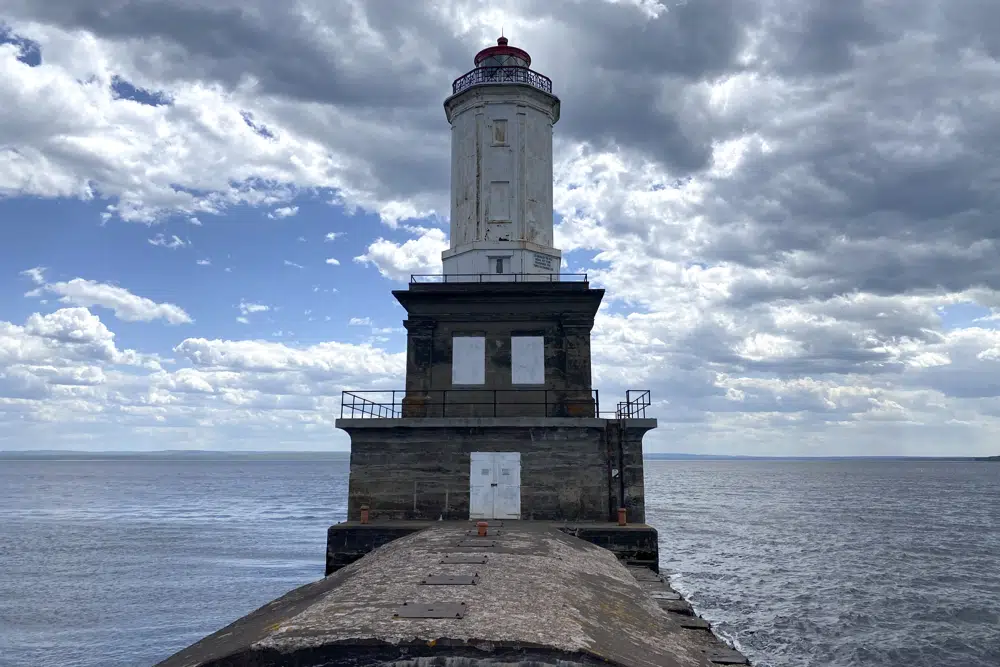Vanishing Victor
Don’t Kill ‘Frankenstein’ With Real Frankensteins at Large
by Maureen Dowd
By the time I took off my mortarboard two weeks ago, my degree in English literature was de trop. Instead of a Master of Arts, I should have gotten a Master of Algorithms.
As I was pushing the rock up a hill, mastering Donne, Milton, Shakespeare, Dickens, Joyce and Mary Shelley, I failed to notice that the humanities had fallen off the cliff.
t was as if the bottle of great wine I saved to celebrate my degree was bouchonné.
The New Yorker ran an obit declaring “The End of the English Major.” One English professor flatly told Nathan Heller, the writer of the 10,000-plus-word magazine piece, that “the Age of Anglophilia is over.”
The Harvard English department handed out tote bags with slogans like “Currently reading” and dropped its poetry requirement for an English degree. But it was too late for such pandering. Students were fleeing to the hotter fields of tech and science.
“Assigning ‘Middlemarch’ in that climate was like trying to land a 747 on a small rural airstrip,” Heller wrote.
Trustees at Marymount University in Virginia voted unanimously in February to phase out majors such as English, history, art, philosophy and sociology.
Loopin’ Alive
Classic Tracks: The Bee Gees ‘Stayin’ Alive’
Producers: The Bee Gees, Albhy Galuten, Karl Richardson • Engineer: Karl Richardson
By Richard Buskin
Disco was an American phenomenon, but its greatest hits were recorded in France by an English band who were trying to play R&B…
Years after the ’70s disco fad and subsequent backlash had subsided, Maurice Gibb told an interviewer that he’d like to dress up the Saturday Night Fever album in a white suit and gold medallion and set the whole thing on fire, such was the stigma that had been attached to him and his brothers Barry and Robin by press and public alike. One minute, they were the purveyors of ‘blue-eyed soul’, melding their pop roots, trademark harmonies and Barry’s newly discovered falsetto with their love of early ’70s Philadelphia funk, crafting heavily rhythmic dance music that was finding its way onto black American radio stations. The next, thanks to a soundtrack album that sold a then-record 25 million copies worldwide and topped the US charts for 24 weeks — where it spawned four number one singles, three of them their own — they were the Kings of Disco and all that encompassed, reaping the rewards and then the brickbats.
Still, as Barry later asserted, it did put food on the table, while the Saturday Night Fever album was a significant moment in the annals of pop culture; a moment when a trio of white Englishmen almost single-handely ignited a widespread mania for the disco music that had previously been the domain of the black and gay sub-cultures in America, and had been superseded by punk in Europe. In addition to the Bee Gees’ recordings of ‘Stayin’ Alive’, ‘How Deep Is Your Love’, ‘Night Fever’, ‘More Than A Woman’, ‘Jive Talkin’ and ‘You Should Be Dancing’, the two-LP set contained their compositions being covered by the Tavares (‘More Than A Woman’) and Yvonne Elliman (‘If I Can’t Have You’), alongside lesser material by the likes of Walter Murphy, David Shire, Ralph MacDonald, MFSB, the Trammps, Kool & the Gang, and KC & the Sunshine Band. Yet it is ‘Stayin’ Alive’, which played over the movie’s opening credits while John Travolta’s Tony Manero strutted down the New York streets in his polyester suit, that best evokes the era and its promotion of sex, drugs and breathless boogying as some form of decadent compensation for a humdrum daily existence.
Return of the Ham
No cellphone? No problem! The vintage radio enthusiasts prepping for disaster
Ham radio users, from teenagers to eightysomethings, are ready to communicate in the next crisis – be it a wildfire, pandemic or ‘the big one’
by Amanda Ulrich in Palm Springs

There’s an ancient fable that Glenn Morrison, a pony-tailed, 75-year-old who lives in the California desert, likes to tell to prove a point. As the lesson goes, one industrious ant readies for winter by stocking up on food and supplies, while an aimless grasshopper wastes time and doesn’t plan ahead. When the cold weather finally arrives, the ant is “fat and happy”, but the grasshopper starves.
In this telling, Morrison is the ant, and those who don’t brace themselves for future emergencies – they’re the grasshoppers.
Morrison is in the business of being prepared. He’s the president of the Desert Rats (or the Radio Amateur Transmitting Society), a club based in Palm Springs that’s dedicated to everything ham radio.
The old-school technology has been around for more than a century. In lieu of smartphones and laptops, ham radio operators use handheld or larger “base station” radios to communicate over radio frequencies. The retro devices can range from the size of a walkie-talkie to the heft of a boxy, 20th-century VCR.
Generations after its invention, one of ham radio’s biggest draws for hobbyists is its usefulness in an emergency – think wildfires, earthquakes or another pandemic. If disaster strikes and internet or cellular networks fail, radio operators could spring into action and help with emergency response communications, and be able to keep in contact with their own networks.
Return of The Scout
Volkswagen Bets an Old SUV Can Help It Win Over Americans
Scout chief Scott Keogh is banking on pure Americana for VW to finally break through in the key market
BERLIN—After decades of trying to sell German engineering to Americans only to end up with a tiny slice of the world’s most profitable car market, Volkswagen VOW 4.85%increase; green up pointing triangle has a new strategy: Pretend it is American.
Inspired by electric-truck startups like Rivian and the buzz around Tesla’s planned pickup, the European car giant is about to relaunch the defunct Scout brand as an off-road electric vehicle made to Americans’ tastes.
VW is hoping that the combination of a U.S. brand, a marketing message heavy on Americana, and a foray into SUVs and pickup trucks—the biggest and most profitable segment of the U.S. car market—can finally boost its presence in the country.
The stakes couldn’t be higher for VW, which has become reliant on China for almost half its sales. As it loses ground there to nimbler homegrown EV startups, it is under pressure to increase its presence in other markets, and the U.S. is where it has the most headroom.
Senator Winfrey
Oprah Winfrey could replace Dianne Feinstein in Senate, report says
by Eric Ting

Among the many plot lines in the Dianne Feinstein saga is Gov. Gavin Newsom’s pledge to appoint a Black woman to replace the 89-year-old should a vacancy arise before her term expires in January 2025.
He made that promise during his 2021 anti-recall campaign, and a new article from the Associated Press’ Michael R. Blood conveys the extent to which the governor may have boxed himself in. While many Black Democrats expect the governor to follow through on his pledge, the two candidates who seemed the most likely at the time of the pledge — Reps. Barbara Lee and Karen Bass — may no longer be options. Lee is running against Rep. Adam Schiff to succeed Feinstein, so Newsom may want to avoid tilting the scales in that race. Meanwhile, Bass just began her tenure as mayor of Los Angeles.
That leaves the “caretaker” route, in which Newsom appoints someone who doesn’t enter the Senate race, and the Associated Press story provided just one name that has been “floated in California circles” as a caretaker pick: celebrity talk show host Oprah Winfrey.
Lighthouses For Sale
Always wanted a lighthouse? US is giving some away, selling others at auction
By MARK PRATT

BOSTON (AP) — Ten lighthouses that for generations have stood like sentinels along America’s shorelines protecting mariners from peril and guiding them to safety are being given away at no cost or sold at auction by the federal government.
The aim of the program run by the General Services Administration is to preserve the properties, most of which are more than a century old.
The development of modern technology, including GPS, means lighthouses are no longer essential for navigation, said John Kelly of the GSA’s office of real property disposition. And while the Coast Guard often maintains aids to navigation at or near lighthouses, the structures themselves are often no longer mission critical.
Yet the public remains fascinated by the beacons, which are popular tourist attractions and the subject of countless photographers and artists.
Vanishing Vincent
The Mystery of the Disappearing van Gogh
The bidding for Lot 17 started at $23 million.
By Michael Forsythe, Isabelle Qian, Muyi Xiao and Vivian Wang

In the packed room at Sotheby’s in Manhattan, the price quickly climbed: $32 million, $42 million, $48 million. Then a new prospective buyer, calling from China, made it a contest between just two people.
On the block that evening in November 2014 were works by Impressionist painters and Modernist sculptors that would make the auction the most successful yet in the firm’s history. But one painting drew particular attention: “Still Life, Vase with Daisies and Poppies,” completed by Vincent van Gogh weeks before his death.
Pushing the price to almost $62 million, the Chinese caller prevailed. His offer was the highest ever for a van Gogh still life at auction.
In the discreet world of high-end art, buyers often remain anonymous. But the winning bidder, a prominent movie producer, would proclaim in interview after interview that he was the painting’s new owner.
Kauai Dawn Patrol
Hawaii’s Feral Chickens Are Out of Control
Polynesians brought chickens’ wild ancestors to the islands. Europeans brought domestic chickens. Now they’ve mixed, and are everywhere.

On the island of Kauai, wherever humans go, chickens go too. Hens and chicks kick around in grocery-store parking lots and parks. They’re visitors to cookouts and picnics. On popular hikes, many people are rewarded at the end of the trail with a picturesque view of the island and a small flock of chickens. The birds kick up newly planted condo landscaping and community gardens. Restaurants hand-paint signs asking patrons not to feed the fowl.
These are not your average chickens. Descended from birds brought to the island in centuries past, they are now feral, surviving on their own, which suits them just fine. The hens are drab and blend into the bushes. The roosters are a mixture of orange, mahogany red, and iridescent black. At night they roost in trees for safety. In the morning, roosters begin calling long before dawn—and continue all day long. All roosters do this, but these ones live among people instead of in industrial barns. Even so, tourists seem to love them. When I was there a few years ago, I saw souvenir shops full of T-shirts and caps that referred to the roosters as Kauai Dawn Patrol.
Kenneth Anger Gone
Kenneth Anger Dies: Groundbreaking Experimental Filmmaker And ‘Hollywood Babylon’ Author Was 96
By Greg Evans
Kenneth Anger, the experimental filmmaker and author whose work was groundbreaking in its exploration of gay themes and erotica, has died. He was 96.
His death was announced by his gallery, Sprueth Magers.
“It is with deep sadness that we mourn the passing of visionary filmmaker, artist and author Kenneth Anger (1927–2023),” the gallery posted on social media. “Kenneth was a trailblazer. His cinematic genius and influence will live on and continue to transform all those who encounter his films, words and vision.”
Anger’s films include the 1947 Fireworks, a legendary cinematic achievement in the history of American gay culture and film. He also wrote and published Hollywood Babylon in 1959, a book that popularized scandals and pieces of film-land gossip that, while largely discredited over the years, have remained part of Hollywood lore.
Graydon Rocks
Cannes: Graydon Carter Pulls Off the Party of the Festival with Holy Trinity of Leo, Marty, and De Niro, Plus Sting, and Even Boy George, for Warner Bros. 100th Anniversary

No question, hands down, Graydon Carter bested everyone in Cannes party land last night.
The owner and editor in chief of AirMail.com put his old magazine, Vanity Fair, to shame with a star studded list of guests at the Hotel du Cap Eden Roc.
Carter grabbed the Holy Trinity of stars with Leonardo di Caprio, Martin Scorsese, and Robert De Niro celebrating their huge success with “Killers of the Flower Moon.”
Carter co-hosted the party with Warner Discovery owner and chief David Zaslav. The pair welcomed Sting and his activist-actress-stunner wife Trudie Styler, plus Scarlett Johansson and Colin Jost, Tom Hanks and Rita Wilson, Lily Rose Depp, Jason Statham and even Boy George turned up!
Tina Turner Gone
Legendary Singer Tina Turner Dead at 83
Music icon Tina Turner has died at the age of 83, her rep confirmed on May 24: “All our heartfelt compassion goes out to her family.”
By JESS COHEN
The music world has a lost a beloved artist.
Legendary singer Tina Turner has died at the age of 83, her team confirmed in a statement on May 24.
“It is with great sadness that we announce the passing of Tina Turner,” the statement, posted to her social media pages, read. “With her music and her boundless passion for life, she enchanted millions of fans around the world and inspired the stars of tomorrow. Today we say goodbye to a dear friend who leaves us all her greatest work: her music. All our heartfelt compassion goes out to her family. Tina, we will miss you dearly.”
El Popo Spewing
Huge swathes of Mexico are blanketed in dust as Popocatépetl volcano continues to spew ash and dust, with 3M ordered to prepare for evacuation
Around three million people have been ordered to evacuate as huge swathes of Mexico were blanketed in dust by the Popocatépetl volcano, which has also delayed flights and caused schools to close.
The country’s National Civil Protection Coordination increased its threat level to ‘yellow phase 3’ which ordered the evacuations and warned people nearby to prepare for the possibility of leaving the area.
The next step, a red alert, triggers mandatory evacuations, and dozens of shelters have already been opened in areas surrounding the crater as a precaution.
Approximately 25 million people live within 60 miles of the Popocatépetl volcano, just 45 miles southeast of Mexico City.
For more than a week, the 17,797-foot mountain – known affectionately as ‘El Popo’ – has been increasingly explosive, spewing great plumes of gas, ash and incandescent rock into the air.
Maya Revisited
from The Washington Post via MSN
Long-hidden ruins of vast network of Maya cities could recast history
by Charlotte Lytton
Beneath 1,350 square miles of dense jungle in northern Guatemala, scientists have discovered 417 cities that date back to circa 1000 B.C. and that are connected by nearly 110 miles of “superhighways” — a network of what researchers called “the first freeway system in the world.”
Scientist say this extensive road-and-city network, along with sophisticated ceremonial complexes, hydraulic systems and agricultural infrastructure, suggests that the ancient Maya civilization, which stretched through what is now Central America, was far more advanced than previously thought.
Mapping the area since 2015 using lidar technology — an advanced type of radar that reveals things hidden by dense vegetation and the tree canopy — researchers have found what they say is evidence of a well-organized economic, political and social system operating some two millennia ago.
The discovery is sparking a rethinking of the accepted idea that the people of the mid- to late-Preclassic Maya civilization (1000 B.C. to A.D. 250) would have been only hunter-gatherers, “roving bands of nomads, planting corn,” says Richard Hansen, the lead author of a study about the finding that was published in January and an affiliate research professor of archaeology at the University of Idaho.
Classified Discord
A Global Scavenger Hunt for Classified Documents Pits Gamers vs. U.S.
The government secrets leaked on Discord have become fodder for users seeking fun and attention

Videogame enthusiasts are scouring popular social-media platforms in the hope of finding classified U.S. military documents, turning the recent national-security crisis over leaked secrets into a global scavenger hunt.
The competition pits online users eager to see secrets against the U.S. government, which wants to keep those secrets off the internet.
At issue are a cache of sensitive military documents that the Justice Department alleges Jack Teixeira, a 21-year-old member of the Massachusetts Air National Guard, posted on Discord, a platform that allows gamers to gather and communicate online. The documents first began showing up last year on a Discord group—known as a server—and remained unnoticed for months until some of them were reposted to other larger servers and platforms, eventually finding their way to the media, garnering public and U.S. government attention.
3D Titanic
Titanic: First ever full-sized scans reveal wreck as never seen before
By Rebecca Morelle and Alison Francis
The world’s most famous shipwreck has been revealed as never seen before.
The first full-sized digital scan of the Titanic, which lies 3,800m (12,500ft) down in the Atlantic, has been created using deep-sea mapping.
It provides a unique 3D view of the entire ship, enabling it to be seen as if the water has been drained away.
The hope is that this will shed new light on exactly what happened to the liner, which sank in 1912.
More than 1,500 people died when the ship struck an iceberg on its maiden voyage from Southampton to New York.
“There are still questions, basic questions, that need to be answered about the ship,” Parks Stephenson, a Titanic analyst, told BBC News.
He said the model was “one of the first major steps to driving the Titanic story towards evidence-based research – and not speculation.”
First Kiss
Ancient kiss-tory: First evidence of smooching took place in Middle East 4,500 years ago

COPENHAGEN, Denmark — The origins of kissing date back 4,500 years, a discovery that’s giving researchers insight into disease transmission instead of romance! Researchers in Denmark say the earliest documented evidence of a human kiss comes from Mesopotamia, the historical area that now encompasses present-day Iraq, Iran, Kuwait, Syria, and Turkey.
Earlier studies proposed that the first evidence of human lip kissing began specifically in South Asia about 3,500 years ago. From there, it was thought to have spread to other regions, potentially expediting the spread of the herpes simplex virus in the process.
However, this new research, conducted by scholars from the University of Oxford and the University of Copenhagen, suggests that kissing was a cultural practice in the ancient Middle East at least 1,000 years earlier. Based on various written sources from the earliest Mesopotamian societies, Dr. Troels Pank Arbøll and Dr. Sophie Lund Rasmussen discovered that kissing was already a well-established practice 4,500 years ago in the Middle East.
Moonbai
Dubai’s next big thing? Perhaps a $5 billion man-made ‘moon’ as the city’s real estate market booms
By NICK EL HAJJ

DUBAI, United Arab Emirates (AP) — Who says you cannot reach for the moon? A proposed $5 billion real estate project wants to take skyscraper-studded Dubai to new heights — by bringing a symbol of the heavens down to Earth.
Canadian entrepreneur Michael Henderson envisions building a 274-meter (900-foot) replica of the moon atop a 30-meter (100-foot) building in Dubai, already home to the world’s tallest building and other architectural wonders.
Henderson’s project, dubbed MOON, may sound out of this world, but it could easily fit in this futuristic city-state. Dubai already has a red-hot real estate market, fueled by the wealthy who fled restrictions imposed in their home countries during the coronavirus pandemic and Russians seeking refuge amid Moscow’s war on Ukraine.
Amnesianet
from The Washington Post via MSN
The internet’s memory is fading in front of us. Preserve what you can.
by Chris Velazco

I signed up for Facebook in my senior year of high school, just as the service was branching out from its college campus confines. And even then, in those early days, the message from my teachers, my parents, and those talking heads on TV was the same: don’t put anything on the internet that you don’t want floating around forever.
To this day, that’s good advice. But it’s also clear the internet’s memory isn’t exactly the steel trap we were all told it was.
In (what else?) a tweet posted last week, Twitter CEO Elon Musk said the social media service would be “purging” user accounts if they lay dormant for long enough.
The period of inactivity that would prompt an account deletion is pretty long — Musk said the move would apply to accounts that have gone unused for “several years,” and that accounts would be “archived” in some way. But the lack of clarity around what “archiving” means is little comfort to, say, people who continue to seek a sense of closeness with Twitter-using friends and loved ones who have died or are incarcerated.
Madison Square Cowboy
For Many Big Cities, It’s Their First Rodeo. ‘You Don’t Do That In Cowboy World’
Bull riding is becoming more popular in metro areas, and that poses hurdles—trucking dirt through traffic to the arena and teaching manners; no booing

For those who follow the burgeoning sport of bull riding, the stars are naturally the riders themselves—who train for years to master the art of staying atop a 1,700-pound bucking bull for a full eight seconds, while maintaining a certain control, if not graceful authority.
Then there’s Randy Spraggins, who’s charged with getting 750 tons of dirt–or 35 dump-truck loads—into New York City’s Madison Square Garden.
Mr. Spraggins, an independent contractor who’s worked with the Professional Bull Riders organization—PBR, for short—since its inception 31 years ago, is the “soil savant” behind the sport, as one industry insider refers to him. He is responsible not just for trucking dirt in and out of the many arenas where PBR stages competitions, but for also making sure it is just right–soft enough for the riders to land on as safely as possible when they inevitably fall, but hard enough to give the bulls the right footing.
“When the ground is good, the bulls are bucking,” Mr. Spraggins, a 62-year-old North Dakota native, explains.
A Score of 1,000 Corpses
Rob Zombie’s ‘House of 1,000 Corpses’ Turns 20: An Oral History of a Bloody Cult Classic
As the cult classic turns 20, here’s the story of a hellraising director who was given a blank check to make his gory spectacular, scared off film execs, and inspired generations.
by AJ McDougall

It’s the year 2000, and you’re an unsuspecting tourist at Universal Studios.
You’re on the studio backlot tour, seated on one of those trams as it trundles up a peaceful residential-looking street. Your guide points out one of the houses. It’s seen better days (namely in 1982, when it served as a cheery brothel run by Dolly Parton) and looks decidedly sinister: ramshackle clapboards painted a sinister gray.
Suddenly, a man staggers out of the front door, covered in blood and wearing someone else’s skin. He leers and waves at your wide-eyed group.
More than 20 years later, the man, actor Bill Moseley, recalled to The Daily Beast’s Obsessed how the tour guide didn’t miss a beat, announcing, “‘And on your right, you’ll see Rob Zombie’s movie House of 1,000 Corpses in production.’”
This spring marks that movie’s 20th anniversary. A nasty little stink bomb of a grindhouse slasher, the “plot” of House of 1,000 Corpses, if it can be called that, concerns four kids (including a pre-Office Rainn Wilson) who get lost on the backroads of America while searching for a local legend named Dr. Satan. Instead of finding him, they’re captured by a psychotic family called the Fireflys, who—spoilers—brutally kill off the youngsters one by one.
After The End of Culture
Surviving Hyperculture
Does the term “culture” even mean anything, given humanity’s turn away from particularity and toward a more fluid world of never-ending change? Philosopher Byung-Chul Han, known for his treatise-like reflections on modern life, combining philosophical inquiry with cultural critique. Han objectively delineates and clarifies modern society’s existential ailments, while trying to discern where we may be going on the current trajectory. His book Hyperculture: Culture and Globalization is a look at the way the world is shifting due to globalization.
Who are we as human in this strange world? Are we mere tourists, to use Han’s metaphor, or are we searching for a deeper meaning? By definition, a tourist collects experiences that are often superficial, and the way we experience culture today seems to operate on the same level. Rootlessness to such an extreme can lead to a total existential breakdown. Any notion of boundaries, be they metaphysical or geographical, will quickly dissipate and with that the perennial question of what it means to be human. After all, it is our differences that maintain creativity as well as, unfortunately, destruction.
The worlds are shifting, and the question is whether a new world is emerging. “After the end of culture,” writes Han, “should the new human being simply be called ‘tourist’? Or are we at long last living in a culture that affords us the freedom to spread into the wide open world? If we are, how might we describe this new culture?” Han is alluding to the “end of culture,” which is enough to make everyone quite depressed. Fast-moving technology has precipitated this change, and we cannot turn back the clock. Technology has tapped into human listlessness and spiritual torpor, taking many souls hostage.
News Chaos
Drugged-up Stevie Nicks, feuds with Kurt Cobain: Inside MTV News’ glory days
Not a lot of news anchors would be suspected of helping to trash a pair of hotel rooms and still keep their jobs.
But such was the case when Kurt Loder, then the face of recently shut-down MTV News, aimed to settle a feud with Kurt Cobain in 1992.
It grew out of the the grunge star souring on Loder after he publicized a Vanity Fair article about Courtney Love doing drugs while pregnant.
Cobain and wife Love hated the article and suddenly hated Loder as well.
When the Nirvana frontman expressed an interest in making amends, Loder hopped a jet to Minneapolis and met the rocker mid-tour.
The Marauder
The Legend of the Florida Highway Patrol Mercury Marauder, the Fastest, Rarest Panther of Them All
Twenty years ago, the Florida Highway Patrol rolled out a fleet of souped-up Mercury Marauders for high-speed pursuits.
BY JESUS GARCIA

I spotted a Ford Crown Victoria Police Interceptor on duty this week. It was a Laredo Police Department patrol car, and it gave me a touch of sentimentality seeing this decade-old workhorse. The odometers on these P71 Interceptors are rapidly reaching “I’m too old for this shit.” But seeing that old cop car reminded me of the legend of Florida’s fastest, rarest Panthers: the Florida Highway Patrol Mercury Marauders.
Twenty years ago, Florida’s highways were patrolled by a special group of unmarked 2004 Mercury Marauders thanks to an anonymous donor who gifted 27 cars to the Florida Highway Patrol, and a local tuner named named Dennis Reinhart who modified them for use in high-speed pursuits. The Marauder was already a hotted-up version of the standard Crown Vic, with a 302-hp V8 out of the Mustang Mach 1. But Reinhart took it further with a host of mods that made these the ultimate sleeper sedans.
Mavericks Drowning
The famed Mavericks surfing contest drowned in acrimony. Can it be saved?

HALF MOON BAY, Calif. — The wave roars like a dozen cannons as it climbs four stories high, casting the few bold enough to surf its crest into a teeming pit of frigid, shark-filled ocean. It costs nothing to paddle the half-mile from Pillar Point through surging sea and up a liquid mountain that has slain two of the most gifted men to ride a surfboard. Daring death has no price tag, even if people keep trying to find one.
Juan de Fuc’d
A Disaster the Size of Multiple Katrinas Is Building Off Washington’s Coast
The Coast Guard is the first line of defense against a massive tsunami. Will it also be an early victim?
By ERIC SCIGLIANO

On the north shore of Washington’s wild Olympic Peninsula, a scimitar-shaped sandspit called Ediz Hook arcs for three miles into the Strait of Juan de Fuca. At its tip, between snowy mountains to the south and Vancouver Island to the north, sits what may be the nation’s most scenically sited military installation — and its most vulnerable.
U.S. Coast Guard Air Station Port Angeles is the very first of first responders when something goes wrong, as it often does, on the state’s tangled straits and inlets and stormy outer coast and, sometimes, on the peaks and bluffs overlooking them. The station’s three MH-65 Dolphin helicopters are the only aircraft the Coast Guard, America’s frontline coastal defense and search-and-rescue service, bases along Washington’s deeply crenulated 3,026-mile coastline. In 2021, they undertook 195 search-and-rescue missions. Ediz Hook is also home base for four seagoing cutters, 87 to 110 feet long, and one 210-foot medium-endurance cutter, which are often away patrolling for drug smuggling, human trafficking, illegal fishing, oil spills and other security and environmental threats. Two 29-foot and two 45-foot short-range response boats deal with local emergencies; they joined the choppers on 16 rescue missions in 2021 and responded on their own in 23 others.
But those exploits are just a warm-up for the disaster to come. Someday — next week, next year, maybe next century — a sudden and deadly marine shock will strike the Northwest coast: what locals call the Big One, a circa 9.0-magnitude offshore earthquake generating tsunami surges reaching 60 feet high or more. Preparations for this threat have especially lagged in Washington, says state seismologist Harold Tobin, who chairs the University of Washington’s seismology and geohazards program and the Pacific Northwest Seismic Network: “Oregon, California and British Columbia have all taken it more seriously.”
MTV News Gone
MTV News, which chronicled the music and politics of the ’90s, shuts down
BY MEG JAMES

(MTV )
Perhaps it’s fitting that MTV News, a youth brand if there ever was one, never hit the big 4-0.
On Tuesday, Paramount Global pulled the plug on MTV News, a cable television staple from the late 1980s through the early aughts, and was particularly well-known — especially to Gen-Xers and older millennials — for chronicling the heady music culture of the ’90s.
The influential and crowd-pleasing telecast brought pop music culture, news and politics to young audiences, long before the internet and Napster changed the industries of media and music in fundamental ways.
Tolstoy 2023
Leo Tolstoy the Free Thinker: Yet Another ‘New’ Look at ‘War and Peace’
By John Tamny

For mountain climbers, one imagines that Mt. Everest looms as the ultimate climb to validate one’s ability. For runners, it would be the Boston Marathon, for triathletes the Iron Man?
For readers, it’s no reach to say that Leo Tolstoy’s War and Peace is the Mt. Everest, Boston Marathon, or Iron Man of reading. Coming in at 1358 pages comprised of tiny letters, just looking at the novel is to feel intimidated. Picking it up in no way reduces the internal discomfort. No one likes to give up (see deaths on Everest, etc.), but it’s safe to say that more people have quit reading War and Peace than have completed it, after which it’s even safer to say that exponentially more people have purchased War and Peace than have ever begun reading it. It’s easier on one’s psyche to not open the book at all than to open it only to close it for good after just a few pages. Better to not have ventured than to have ventured only to quit, or something like that. At least it gives you deniability.
SETI 2023
Will Powerful New Tools Finally Let Us Hear Alien Civilizations?
The most potent effort yet to find extraterrestrial life is searching for beings that may not want to be found
By Seth Shostak

What could motivate extraterrestrial civilizations to beam electromagnetic signals into space? They might be using them for navigation or entertainment, or as a way of pinging our solar system to see if anyone’s home. Whatever the case, detecting such transmissions would be the easiest way for humankind to prove that someone else is out there, and astronomers have made intermittent attempts to eavesdrop on alien broadcasts for six decades.
These initiatives are collectively known as SETI, the Search for Extraterrestrial Intelligence. Its history dates back to 1960, when astronomer Frank Drake aimed an 85-foot antenna at two relatively close star systems, hoping to pick up an alien signal. It was a simple, two-week experiment using already-existing equipment. Although Drake failed to discover any transmissions, his work excited the public and spawned further attempts.
Early this year, the SETI Institute (where I work) and the University of California, Berkeley, launched COSMIC, a new project that is about a thousand times more comprehensive than Drake’s pioneering effort. It will search for alien signals—both intentional and unintentional—from some 40 million star systems by analyzing massive amounts of data from the Very Large Array, an ensemble of 27 antennas dotting the scrub deserts of western New Mexico. The researchers have also deployed cameras designed to look for powerful flashing lasers that could be used by extraterrestrials to beam information between star systems, much like a ship semaphore.
Forever Follicles
The Secrets of Aging Are Hidden in Your Ovaries
The ovaries age faster than any other organ in the body. Figuring out how to slow down that process could have health benefits for women—and men.
by EMILY MULLIN

ILLUSTRATION: KATERYNA KON/GETTY IMAGES
THE OVARY IS a time machine. It travels to the future, reaching old age ahead of the rest of the body. At birth, each ovary contains around a million follicles—tiny, fluid-filled sacs that hold immature eggs. But the decline of these follicles is immediate and unceasing. By puberty, only about 300,000 remain. By age 40, the vast majority are gone. And by 51, the average age of menopause in the United States, virtually none are left.
Humans are an oddity in this regard. Most mammals remain fertile up to the end of their lives; the only species known to experience menopause naturally are humans and some whales. In humans, the loss of hormones during menopause sets off a cascade of negative health effects: Bones get brittle; metabolism slows; and the risk of cardiovascular disease, diabetes, stroke, and dementia increases. Paradoxically, women live longer than men on average but spend more of their older years in poor health.
Final Thoughts
Scientists Record Increased Activity In Human Brain Moments Before Death
The researchers advised against making firm conclusions due to the limited sample size and the fact that the patients did not survive.
Edited by Nikhil Pandey

Research finds intriguing brain wave patterns in comatose patients.
For a very long time, mysteries surrounding death and experiences during and after a person’s death have challenged the minds of humans. The consequences of death on the human body and psyche have been the subject of numerous studies and trials.
Now a modest study has produced preliminary evidence of increased brain activity throughout the process of dying, which may be connected to consciousness.
Researchers from the University of Michigan in the US have discovered that two people’s brains experienced an increase in activity as they approached death. This phenomenon is similar to spikes in brain activity that have previously been observed in animals whose hearts had stopped beating.
